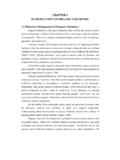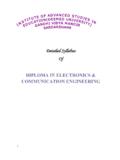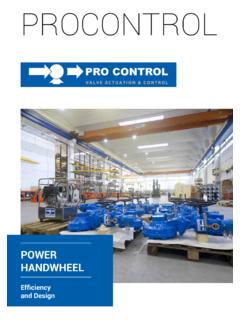Transcription of Automated Protein Precipitation - ManSci
1 Automated Protein Precipitation Joan M. Stevens, , Greg Robinson, Kirby Reed, Alan Hamstra Abstract: Sample preparation by Protein Precipitation is routinely used for removal of matrix components from biological fluids (typically plasma) prior to analysis. It is a generic sample preparation technique, applicable to a broad range of analyte types. Many times it's the sample preparation of choice when more selective techniques SPE are considered to be too complex or time consuming to develop and /or perform. Conventional Protein Precipitation is carried out in vials or collection microplates, with subsequent centrifugation and supernatant removal. Recently, filterplate Precipitation has increased in acceptance, because this approach significantly reduces manual liquid handling steps and is readily Automated .
2 Outline: Hardware Software Assays Procedure Results Summary and Conclusion Hardware and Control Quad-Z 215, (2) 402 Dual Dilutors equipped with (4) 10. ml syringes, (4) constricted tip probes, PN 2507215. Vacuum Rack, with 507 Power Module and vacuum pump (vacuum rack adapters for various filter plates), cap mat Orbital Shaker Off-line evaporation station Trilution LH. Software: The application builder allows you to change the components of a application by just deleting the step or by grab and drop into a new location The sample wizard allows you to save an existing set of samples or change the number and or location of the samples by just lassoing the new samples. This is automatically saved and can be used again. Assay Procedure: 4 major manufacturers of filter plates were evaluated on the Quad-Z 215, 96 well format Strata Impact Protein Precipitation Plate, 2ml Empore Filter Plate, ml Sirocco Protein Precipitation Plate, 1 ml ISOLUTE PPT+ Protein Precipitation Plate, 1 ml Based on the overall dimension of the plate and the depth, VR adapters are used to optimize the position of the Precipitation plate into the collection plate and the height of the hold down bar, three adapters are available; VR1, VR2, VR3.
3 The hold down bar and adapter plates can be interchanged depending on the Protein Precipitation plate. Acetaminophen and Ketoprofen were used to monitor the cleanup procedure and to evaluate recovery. Spiked plasma of ug/100 uls of A. + K was used on all the plates. The goal of this application is not to prove that the Precipitation plates work which has already been shown by the individual manufacturers, but to show that the plates can be Automated onto the Quad-Z 215. Assay Procedure, cont: Processing options for Protein Precipitation Plasma First Solvent First Plasma First Method Solvent First Method Filterplate Filterplate Pipette 100 uls of plasma into each well Pipette 400 uls of crash solvent*. Pipette 400 uls of crash solvent* Pipette 100 ul of plasma into each well Leave for 2 minutes, possible vortexing Leave for 2 minutes, possible vortexing Apply vacuum (-10 Hg for about 3 Apply vacuum (-10 Hg for about 3 min).)
4 Min). * Crash solvent = 50/50 Methanol/ACN. Assay Procedure, cont: The methods that were used, plasma first versus solvent first for each manufacturers' filter plate were based on their recommendations Filter plates: Strata Impact - solvent first . Empore - plasma first . Sirocco - solvent first . ISOLUTE - solvent first . Assay Procedure, cont: The QUADZ 215 processes 4 samples at a time, the crash solvent is aspirated in bulk so that it can dispense the crash solvent to as many positions as possible before aspirating additional crash solvent The QUADZ 215 can aspirate 4 individual plasma samples simultaneously and dispense into individual ppt wells rinsing in between steps Automatic vortexing and filtration are available. It takes approx minutes to perform 8 combinations of crash solvent and sample, 30 minutes for a 96 well plate.
5 Results, cont: All 4 manufacturers' filter plates worked well on the QUADZ 215. Specific adapters were used: Strata ImPact - VR2 adapter and hold down Empore - VR2 adapter and hold down Sirocco - VR2 hold down only ISOLUTE - VR2 adapter and VR1 hold down The use of adapters allows for one vacuum rack to be a universal rack The use of the adapters compensates or any dimensional difference between plates allowing for a tight seal for the vacuum The vacuum rack can hold 2 filter plates at a time, 192 filtered samples Filter Plate and Vacuum Rack: Top and side view of a filter plate in the vacuum rack Vacuum rack and controller Vacuum rack atop the orbital shaker Vacuum rack adapters and hold down bar Results: BLANK PLASMA. STD A+K. K. A. Protein PPT samples were dried and reconstituted in 30 ul of methanol, a 25 ul injection was chromatographed on a BetaBasic-C18 column, 150 x mm, 3 micron at ml/min, mobile phase was Water( formic acid)/ACN.
6 ( formic acid), 254 nm, AUFS , ug/100 uls samples were introduced to the ppt plate or 100 ul of plasma for the blank. Results, cont;. EMPORE K SIROCCO . K. A A. ISOLUTE STRATA K. K. A. A. Protein PPT samples were dried and reconstituted in 30 ul of methanol, a 25 ul injection was chromatographed on a BetaBasic-C18 column, 150 x mm, 3 micron at ml/min, mobile phase was Water( formic acid)/ACN. ( formic acid), 254 nm, AUFS ug/100 uls samples were introduced to the ppt plate. Results, cont: Using the Protein Precipitation plates removes between 87-90% of the interfering Protein based on a average weight of dried plasma samples (4) versus plasma samples processed through the Precipitation plate (4) and then dried. Which is within the specifications noted by the various plate manufacturers.
7 The recovery for the two drugs Acetaminophen and Ketoprofen ranged from 80% to 100+%. In general Acetaminophen gave slightly lower recoveries than Ketoprofen. We attribute this to variance in the standard profile of Acetaminophen broader peak versus the plasma sample which is much sharper. Again the data correlated well with observed data from the manufacturers. Summary and Conclusion: All 4 manufacturers of Protein Precipitation plates worked well on the QUAD-Z. with the vacuum rack. The key was to test the plate before hand to determine the best adapter fit. This allows for a very strong vacuum pull on the filters. All 4 Protein Precipitation plates gave good to excellent recovery of the spiked drugs in plasma, 80-100+ %. The CV's for the filtered samples were determined to be as low as 4% to approx 10%.
8 There was no clogging observed in any of the wells The wells that are not being used do need to be covered with a cap mat to allow for a complete vacuum Conclusion, cont: We have shown that the use of Protein Precipitation plates on the Quad-Z. 215 with vacuum racks is a viable option to SPE, and is much simpler. The Automated system is capable of processing 8 samples in minutes or 96 samples in 30 minutes. The bottle neck for the process is drying down the samples prior to analysis. It would be advantageous to incorporate a TEC (trace enrichment cartridge) in place of the loop, and dilute the sample prior to exposing it to the cartridge. In this approach the dry down step would be eliminated and totally Automated procedure would be available.
9 This will be evaluated in a future application.








